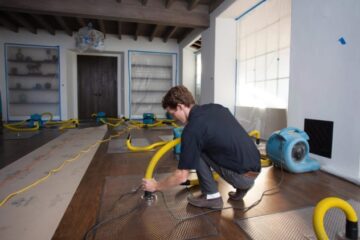Introduction
Have you ever thought about how places like the national archives keep old documents and art safe for many years? The secret is often in special materials, especially archival quality paper stock, which often includes a registered watermark for Commonwealth records. When you use archival paper for your artwork, it helps to keep it lasting longer. This paper protects your work from getting damaged or yellowing. Because of this, future generations can enjoy your art just like it was when you first created it.
Tips for Creating Stunning Artworks on Archival Paper
Creating beautiful art on special archival paper is more than picking the right type. You need to know the long-lasting qualities of the materials you choose. Using good techniques helps your art last. When you combine archival paper with the right methods, your artwork stays bright and attractive for many years.
Also, remember that archival paper has many different textures and weights. This diversity suits many art styles and materials. Feel free to try out different options. You might find the ideal match for your own artistic vision.
Choosing the Right Type of Archival Paper for Your Art
When it comes to choosing archival paper, you have many options. There is smooth hot-pressed paper, which is great for detailed drawings. There are also textured cold-pressed papers that work well for watercolors, known for their bright whiteness. Each type has special qualities for different art forms. It’s important to know how these choices fit with your art tools.
A key factor in archival paper specifications is its pH level and alkalinity reserve. Standards Australia, along with ISO and other groups, give rules for how long paper lasts. Look for paper that has a neutral pH of about 7 or slightly higher. An alkaline reserve, often made of calcium carbonate, helps fight off acids that can develop over time, making it ideal for printing and packaging. This ensures your art lasts longer without brittleness.
Choosing the right paper can feel hard, but places like the National Archives of Australia provide helpful details on what makes a good archival paper. You can also ask art supply stores or experienced artists for their recommendations.
Essential Techniques for Preserving Artwork Longevity
Using archival-quality paper is just the start. There are other ways to help your artwork last a long time. First, make sure that any materials you use with the paper are also of archival quality. This means you should use acid-free adhesives, mats, and framing materials.
Lignin is a part of wood pulp that can make paper brittle and cause discoloration as time goes on. So, choose paper made from cotton, linen, or lignin-free wood pulp. These materials resist damage better and help protect your artwork.
Lastly, think about framing your artwork with UV-resistant glass or acrylic. This choice can reduce fading from light exposure and keep the colors looking bright for longer.
Understanding pH Levels and Their Importance
The pH scale goes from 0 to 14. It tells us how acidic or alkaline something is. A pH of 7 is neutral, anything lower is acidic, and anything higher is alkaline. When we talk about paper, acidity can harm it over time.
Archival paper is usually neutral or slightly alkaline. This is because it has an alkaline reserve, often made with calcium carbonate, added during making. The alkaline reserve helps to balance out any acids that may develop in the paper as it ages, due to the environment, or from being handled.
Knowing about pH levels helps you pick the right art materials. Look for paper and other supplies like adhesives and tapes that say acid-free or pH-neutral. This can help in keeping your artwork for a long time.
Experimenting with Different Mediums
One exciting thing about using archival paper is how flexible it is. It gives you a strong and lasting surface for many art styles. You can try it out with:
- Watercolors and Inks: The paper’s surface stops colors from running together. This helps you create bright washes and clear lines.
- Drawing: If you use graphite, charcoal, or colored pencils, the texture of archival paper holds your work well. This allows you to add rich details.
- Acrylics and Oil Pastels: The weight and texture of the paper support layering and blending patterns that are common with these materials.
It’s smart to test a small part of the paper with your chosen medium first. This helps you make sure that the paper works well with your ideas for your artwork.
Using High-Quality Tools
Just like good archival paper is important, the tools you use are also key. You should buy high-quality, acid-free paints, pencils, inks, and other supplies. These are made to reduce any chemical reactions that might hurt your artwork over time.
Also, think about the adhesives you use for mounting and framing. Look for ones marked as archival quality or acid-free. These adhesives help keep your artwork safe and stop any damage or fading as time passes.
When you choose framing options, look for materials with a registered trademark. This shows that the company follows specific rules for permanence and preservation. Your artwork needs good protection, and using high-quality tools is a big part of that.
Layering Techniques for Depth and Texture
Archival paper is great for layering. It helps you add depth and texture to your artwork. You can use watercolor washes, layer colored pencils, or apply acrylics with a palette knife. The paper stays strong and works well for all these techniques.
When you layer, make sure to let each layer dry completely. This stops any smudging or blending. It keeps each layer clear and boosts the depth of your art.
Try different layering techniques to find cool effects. For example, you can use thin watercolor washes for a bright look. Or, you can create thick layers of oil pastel for a textured, bold style.
Protecting Your Work During Creation
While archival materials are made to last a long time, taking some steps can help keep your artwork looking great. First, use a clean and dust-free area to work. Place acid-free paper or a clean cutting mat on your workspace to avoid any dirt getting on your artwork.
Also, think about putting on clean gloves when you handle delicate surfaces like archival paper. This helps keep oils and dirt from your hands off the paper. It will reduce the chances of smudges and keep the paper in good shape longer.
Lastly, store your artwork right when you are not using it. Use an acid-free portfolio or cover it with acid-free tissue paper. This keeps dust, light, and spills away. It helps protect your artwork and keeps it in the best possible condition.
Allowing Proper Drying Time
Allowing your artwork to dry completely is very important. This is especially true if you are using water-based paints or adding several layers. If the artwork does not dry well, the colors can bleed, smudge, or crack. These problems can reduce the longevity of your art.
Different types of paint need different times to dry. Watercolors dry faster, while acrylics and oils might take longer. Always check the instructions from the manufacturer for drying times. Do not hurry this process.
To help your artwork dry evenly and avoid bending, you should lay it flat on a clean, dry surface. You can also hang it up with clips so that air can flow around it easily.
Considering the Lightfastness of Materials
Lightfastness means how well a material can resist fading when it is exposed to light. If you want your artwork to last, it is important to know how lightfast your materials are. Some pigments might still fade over time, even on archival paper, especially if they get too much light.
When choosing materials, pick artist-grade ones because they often have lightfastness ratings. The American Society for Testing and Materials (ASTM) has a rating system, and higher numbers mean better lightfastness. By using materials with excellent or very good ratings, your artwork will fade less over time.
Keep in mind that too much light can harm even the best materials. To help your art last longer, display it in a spot with indirect sunlight. You can also use UV-filtering glass when framing your artwork for added protection.
Regularly Inspecting Your Artworks
Regularly checking your artwork is important, even when you store it well. This helps you find any potential issues early. By doing this, you can fix minor problems before they turn into big damage.
When you inspect your items, watch for fading, yellowing, mold, or bugs. Check the edges and back of the artwork closely, as these spots can get damaged by the environment. If you see any issues, it’s best to talk to a professional art conservator for advice on how to fix it.
Keep a record of these inspections. Write down the date and any details you notice. This record is useful for insurance and helps you care for your artwork better in the future.
Documenting Your Process
Writing down your artistic process has many benefits. It gives you a look into your creative journey. You can see a timeline of the methods and materials you have used. This record can inspire future projects and show how much you have grown as an artist.
Think about making a special journal or a digital file to note the following:
- Materials Used: List the types of archival paper, paints, inks, adhesives, and any other materials.
- Techniques Employed: Write down any layering techniques, brush strokes, or methods you tried.
- Challenges Faced and Solutions: Keep track of any problems you ran into during your work and how you solved them.
This kind of detailed documentation helps you understand your art better. It can also help you preserve your work in the future, similar to the careful records kept by the National Archives of Australia.
Conclusion
In conclusion, making beautiful art on archival paper needs a few key steps. First, pick the right paper. Then, use good preserving techniques and high-quality tools. It helps to know about pH levels and to try out different mediums. Layering techniques can also add depth and texture to your art. To keep your work lasting, protect it while you create, let it dry properly, and check often for any damage. It’s also important to document your process to see your growth as an artist. By following these tips, you can make stunning artworks that last a long time. If you want to improve your art, start trying out archival paper now.
Frequently Asked Questions
Why is Archival Paper the Best Choice for Artworks?
The archival paper follows the Standards Australia guidelines. It is made to keep the artwork safe and lasting for a long time. The paper has no acid and includes a calcium carbonate alkaline reserve. This helps prevent damage and keeps your art looking good for many years.
Why is it important to use archival paper for creating artwork?
Using archival paper helps keep your art safe for a long time. It is made without lignin, has controlled pH levels, and is overall of good quality. This way, it protects your work from getting damaged over time.
What is archival paper and what makes it different from regular paper?
Archival paper is made to last a long time. It is different from normal paper because it is acid-free and lignin-free. It also has an alkaline reserve. This keeps the paper from breaking down, so your artwork stays bright and colorful for many years.
Keep an eye for more latest news & updates on Buzz Slash!




